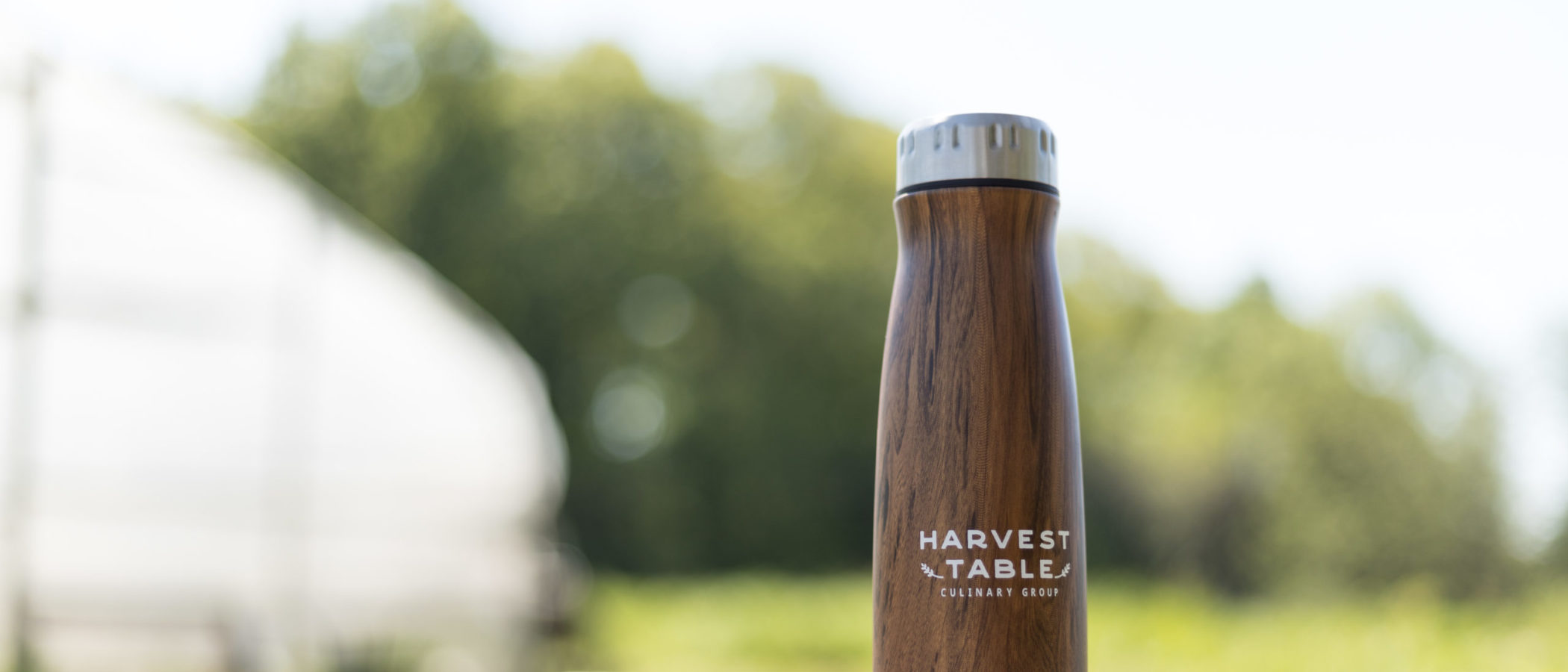
Waste Reduction and Diversion
The best way to reduce waste is to prevent it from occurring in the first place. Learn about our food waste reduction strategies, Green To-Go Box Program, and composting initiatives.
Combating Food Waste
Our top priority is preventing food waste before it can happen in the first place, with strategies focused on reducing pre-consumer food waste. This is food waste that occurs before reaching diners’ plates during the storing, handling, prepping, and cooking process such as vegetable or meat trim, expired or spoiled items, and surplus dishes prepared for service but never served. We follow the EPA’s Wasted Food Scale to guide our operations.
Reduction First
Reduction First
The top tier of the EPA’s Wasted Food Scale is preventing food waste from occurring. We track pre-consumer food waste through a physical and online tool called Leanpath to understand the types of food wasted most often, where waste occurs, and the top loss reasons, among other metrics. This gives us insight into our food waste landscape and allows us to adjust our recipes and preparation techniques accordingly.
Through Intentional menu planning and strategic ordering, we ensure that we only buy food items that are necessary. We partner with companies like Spare Foods and Matriark to bring in products that utilize surplus crops and fresh cut remnants of U.S. grown produce that would have otherwise gone to waste. These partnerships allow us to reduce waste upstream in the supply chain.
Once ingredients are purchased and brought in house, we have strong inventory management, keeping track of fresh and nonperishable items to keep from expiring, and making decisions of how to reincorporate overproduced menu items.
Our culinarians maintain best practices during prep and service to reduce food waste, including batch cooking, where food is cooked in smaller amounts throughout service. Food is served using portion control, with the intention that guests can always ask for more. As the meal period comes to an end, smaller dishes are displayed to reduce the overall amount of food taken off the line and unable to be reutilized.
The second tier of the EPA’s Wasted Food Scale is to either donate or upcycle. Even with proper forecasting, overproduction, or food that has been prepared for service but never makes it to the line, can be a common occurrence. Our chefs assess these items and either upcycle and reintegrate them into future menus or donate them through our partnership with Campus Kitchen, a student-led organization that repurposes recovered foods and turns them into meals for Winston-Salem community members. Surplus food items not used during service, grab & go sandwiches and salads, and fresh produce from the Pit and Under the Oaks Catering are donated to Campus Kitchen.
Did you know? Smith’s Cafe Surplus Pastry Give-Away: Pastries and other baked goods that have not been sold by the end of the day are offered up at a first-come-first-serve basis to late night studiers in ZSR Library. This ensures no sweet morsel goes to waste!
Diversion Second
Diversion Second
As a last resort, instead of sending food waste to the landfill, the EPA’s Wasted Food Scale suggests compost or anaerobic digestion. When food decomposes in the landfill, it releases methane, a greenhouse gas 28 times more potent than carbon dioxide at trapping heat in the atmosphere (EPA). Where possible, we collect pre-consumer food waste and other organic waste to be picked up and processed into compost, which is biologically decomposed matter that can be used as a soil amendment. Read more about our compost initiatives below.
Gallins Family Farm Compost Partnership: Food that is unable to be repurposed within our operations or donated to Campus Kitchen is collected by Gallins Family Farm, a local business that converts commercial and residential food scraps into Carolina Dynamite Compost. Gallins services Reynolda Hall, North Dining Hall, Einstein’s, Zick’s and Smith’s Cafe in ZSR.
Guest Facing Compost Initiatives: While the vast majority of organics collection is made up of pre-consumer food waste generated before it reaches guests’ plates, North Dining Hall, Zick’s, and Smith’s Cafe all collect post-consumer organic waste as well. Most of the packaging at both Zick’s and Smith’s Cafe is compostable. Guests are invited to follow signs at waste stations to discard organic waste. Post-consumer food waste is combined with pre-consumer waste at the dish return in North Dining Hall to be collected for compost. Learn more here about North Dining Hall’s sustainability features.
Diverting Fryer Oil: In all our dining locations, 100% of cooking oil that is no longer food safe is collected by Filta, a company that offers environmentally friendly kitchen solutions. Filta recycles the cooking oil into biodiesel.
Diverting Disposables
Diverting Disposables
Deacon Dining follows the order of reduce, reuse, recycle when it comes to all forms of waste. We work to minimize single use items throughout our operations and encourage reusables where applicable. In circumstances where reusables are not available, Deacon Dining most commonly provides compostable flatware, plates, cups, lids, and napkins.
Green Box Program: Guests looking to take food to-go from the Pit, Magnolia Room, North Dining Hall, or La Sabrosa can participate in our Green Box Program, to obtain a reusable to-go container instead of a single-use container. A $5 deposit is required to opt in which is returned at the end of the semester. Boxes can be exchanged at any participating location for a clean box or token to use in the future.